No, not THAT Jack Black -- amazingly, our driver was the spitting image
of the multi-faceted American actor/singer/comedian.
That happy coincidence should have foretold that this day would be
anything but ordinary for truly providence was shining down on us.
We were on a Canal du Midi adventure, piloting our own boat down a
beautiful stretch of the famous 17th century canal and as much as
we took great pleasure in the leisurely float, we landlubbers were
ready to get off the water and head for terra firma.
We set off from Homps for the 10 mile taxi ride to Minerve,
a tiny but well-known Languedoc village that's always described
as "impenetrable" and "mysterious".
As he drove, our cabbie chatted with regional pride,
effusively gushing about the magic of la Montagne Noire,
surely "the most beautiful place in all of France".
He was poetic in his description of the Minervois wines and
cuisine, a guy clearly happy in both life and work.
Informative, eloquent, cheerful, his running commentary
offered assurance that we had, indeed, chosen the right place to visit.
Arriving at our destination, "Jack" refused to take our money,
promising to return late that afternoon for the ride back to the canal.
I don't think it was the round-trip fare he was interested in, preferring
an airtight lock that required us to stay and give the village a proper tour.
His "baby", his pride and joy, deserved a good long look --
and it didn't take long to prove him right.
picturesque canyon in the middle of the wild Languedoc landscape.
You get a sweeping view of the town from the lovely bridge, its stone houses
and unforgettable authenticity easy to absorb in just a few hours.
But stay longer, for you'll want more.
This is a town that's much more than just one more ruined medieval castle
(yes, there is one) and a few museums (yes, there are two).
It's your chance to walk through a stone built village,
deliberately letting time come to a standstill.
As you pause to admire local houses and uneven cobblestone paths,
you'll be grateful for the unspoiled atmosphere -- trees,
wildflowers and local character all in abundance.
Friends from Paris had recommended Restaurant Relais Chantovent,
raving about the regional menu and inviting welcome -- truffles included.
In one of my less stellar moments as a trip planner, I mistakenly assumed
we could get seated for lunch without a reservation -- after all,
Minerve's location is far from the more cut-and-dried tourist trail.
I was overwhelmingly wrong and we missed our chance.
Dumb, dumber, dumbest -- lesson learned.
Nevertheless, we found a good restaurant, simple and market driven.
We indulged in a few local favorites including the treasured
jambon de la montagne noire and onion confit -- delightful.
But all this heart-stirring tranquility is a bit ironic if you consider
Minerve's overwhelmingly violent past.
of grim bloodshed and savagery.
Magical, mysterious Minerve was once home to one of the bloodiest battles
of the Albigensian Crusade, the horrendous military war against the Cathars,
a small reformed Christian sect doomed thanks to the shenanigans of
Pope Innocent III and the ruling french crown and local nobility.
The precursor of The Inquisition,
this mind-boggling struggle occurred on several fronts in lovely Languedoc,
with a particularly crushing massacre in nearby Béziers.
In 1210, a group of Cathars who escaped sure death in Béziers, sought
refuge in welcoming Minerve, where they were treated with kindness and respect.
Simon de Montfort (the elder), 5th earl of Leicester,unleashed his wrath
on the tiny village and the Minervois held out for six long weeks.
After an agonizing hard-fought surrender, they capitulated,
assured at least of saving their own women and children.
The villainous de Montfort didn't waste any time, promising to
kill those who would not recant their Cathar faith.
In the name of both the Pope and the crown, he chillingly
ordered the death of 140 Cathars, tied and burned at the stake.
Today we would call it jihad or holy war but there was nothing holy in this slaughter. More than anything, it was a land grab and a power struggle and here
in tiny Minerve, you can still find the ghosts of that awful carnage.
A memorial to that day is quite haunting -- a standing stone
with a single dove carved into its core.
Even better, make your way to the Musée Hurepel, a small museum
that visually illuminates the shocking story of the Cathar tragedy.
Through dioramas made with little clay figurines -- knights, villagers,
and villains alike -- the siege of Minerve comes to life.
We bear witness to the perverse iniquity of The Strong
imposing their faith on The Weak -- by force.
The entire sick story is told -- and it isn't pretty.
Nearly impossible to imagine, the plot is ugly -- crusaders gauging out the eyes
of those who wouldn't conform -- then sending their blinded victims into
the wilds of the mountains alone and unaided, a cruelty worse than death.
After a visit to the museum, you'll be ready for a nice carafe of Minervois wine,
relieved that the only struggle in this land today comes from the vines'
tortuous efforts to bear luscious fruit from the rugged, stony landscape.
Drink up and celebrate freedom of religion -- all religions --
and the modern separation of church and state.
In 1210, little Minerve would have been happy for even a smidgen
of the liberty and tolerance we enjoy today.
I think we can all say amen to that.
Some of the best experiences can be found in the secret corners
of Languedoc-Roussillon, especially if you search beyond the tourist trail.
For my money, little Minerve is an unforgettable example of the best of the best.
I hope you, too, get the chance one day to discover the complex nature
of this quiet yet emotionally intoxicating corner of enchanting rural France.
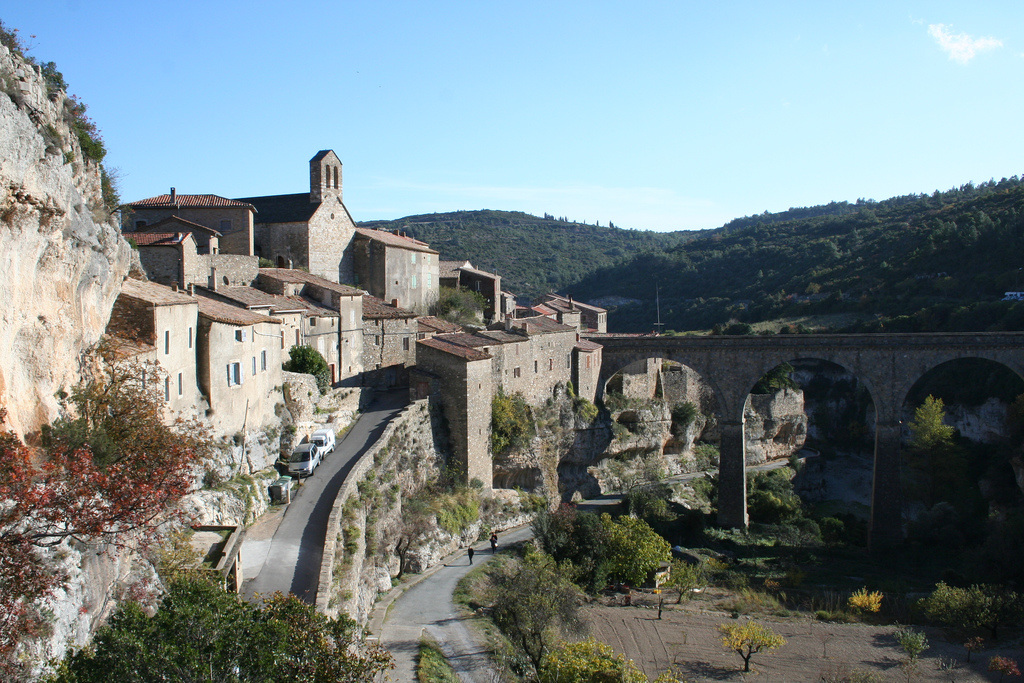

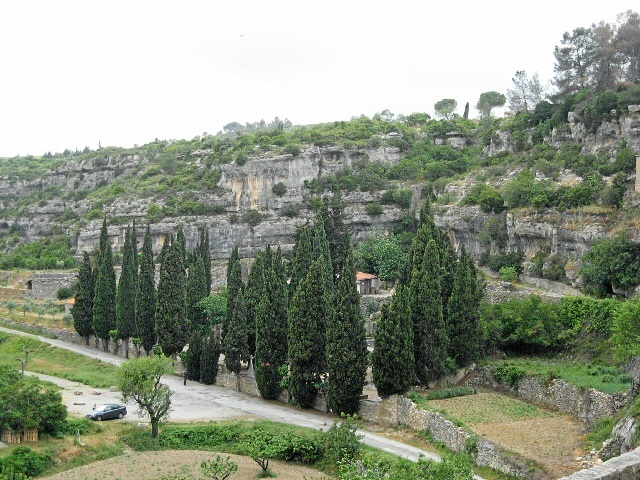
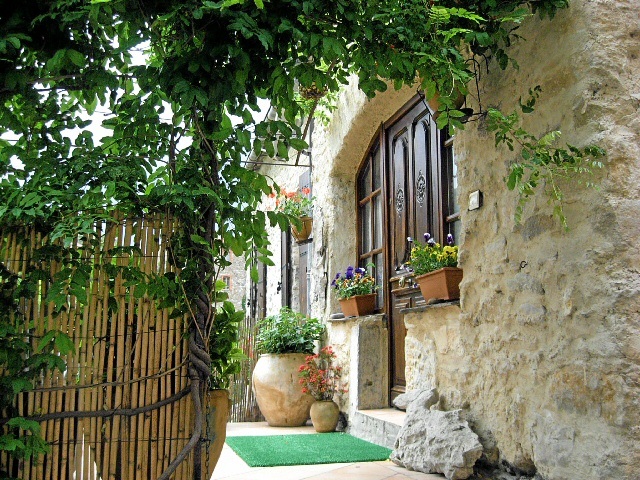



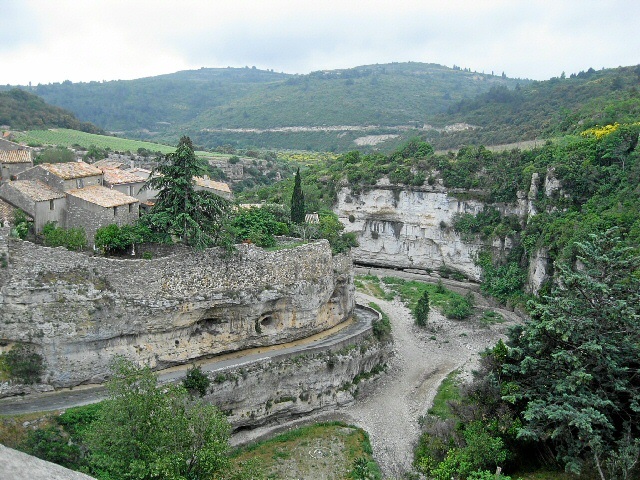
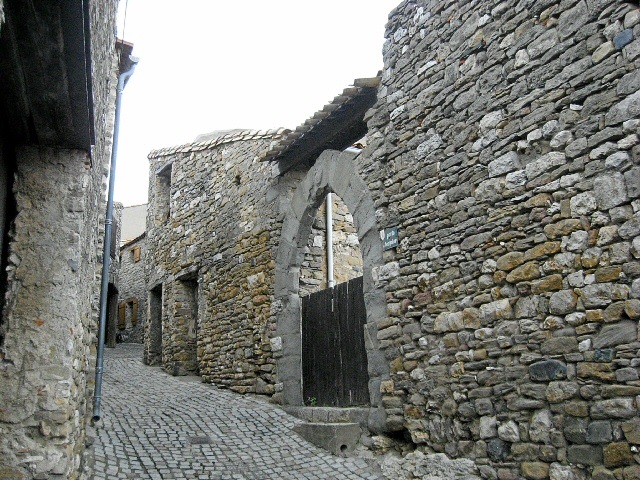





 RSS Feed
RSS Feed
